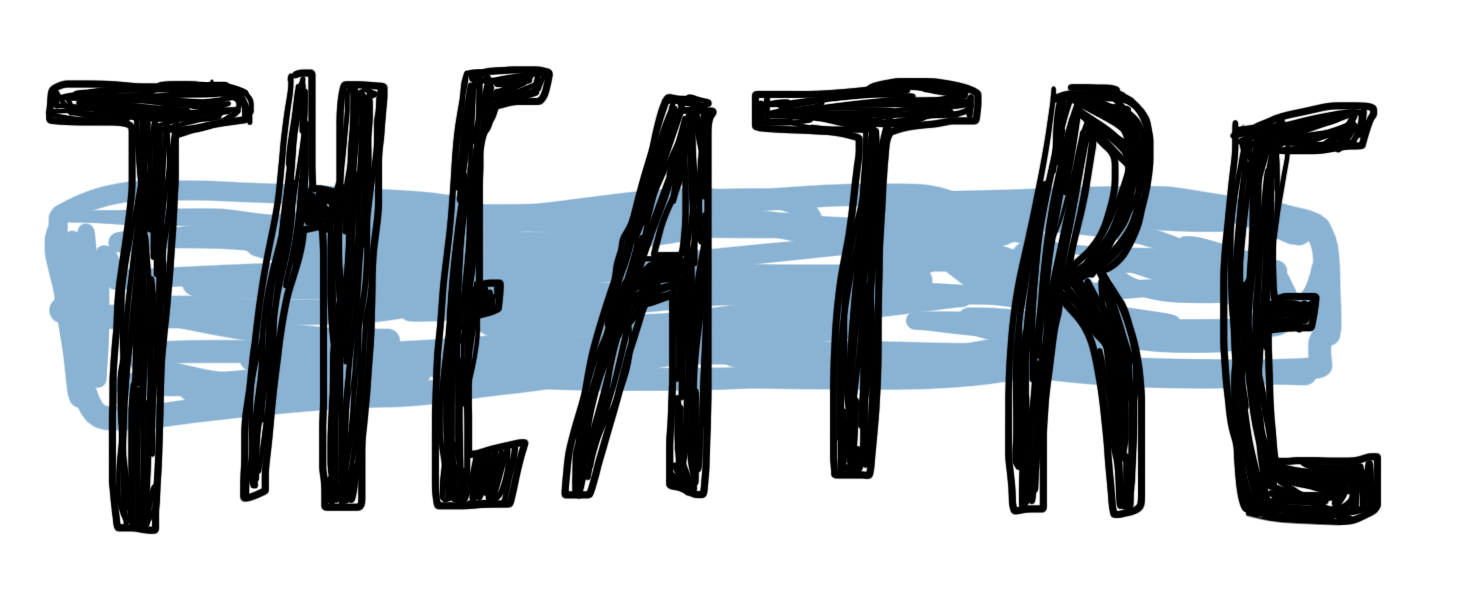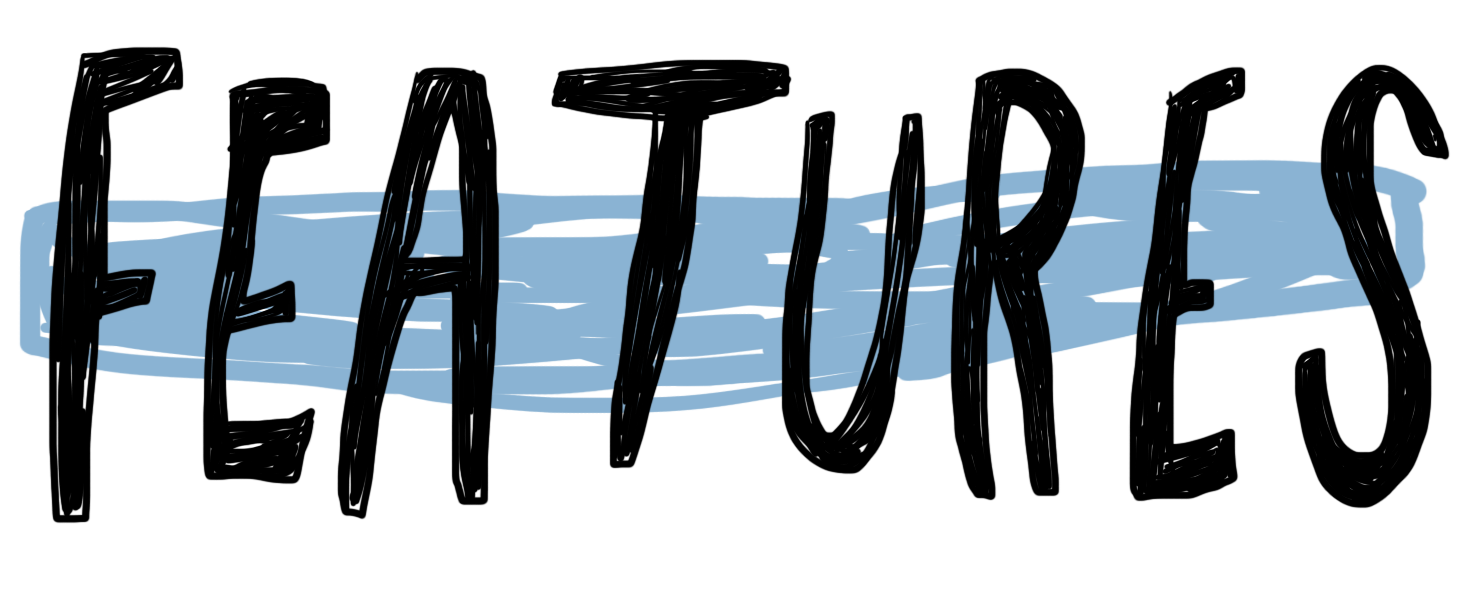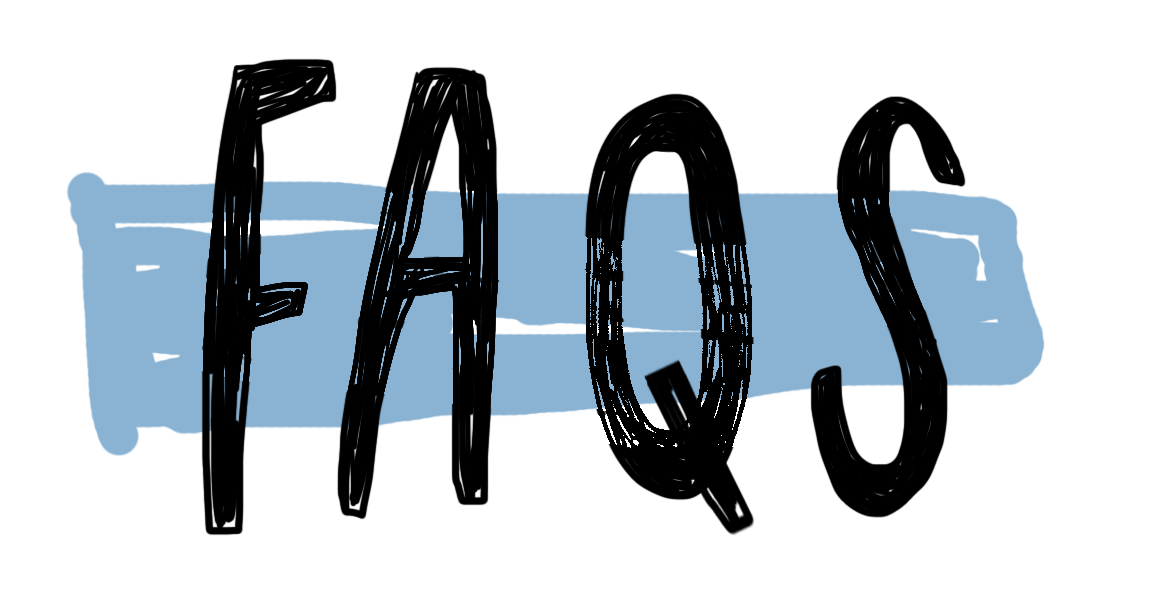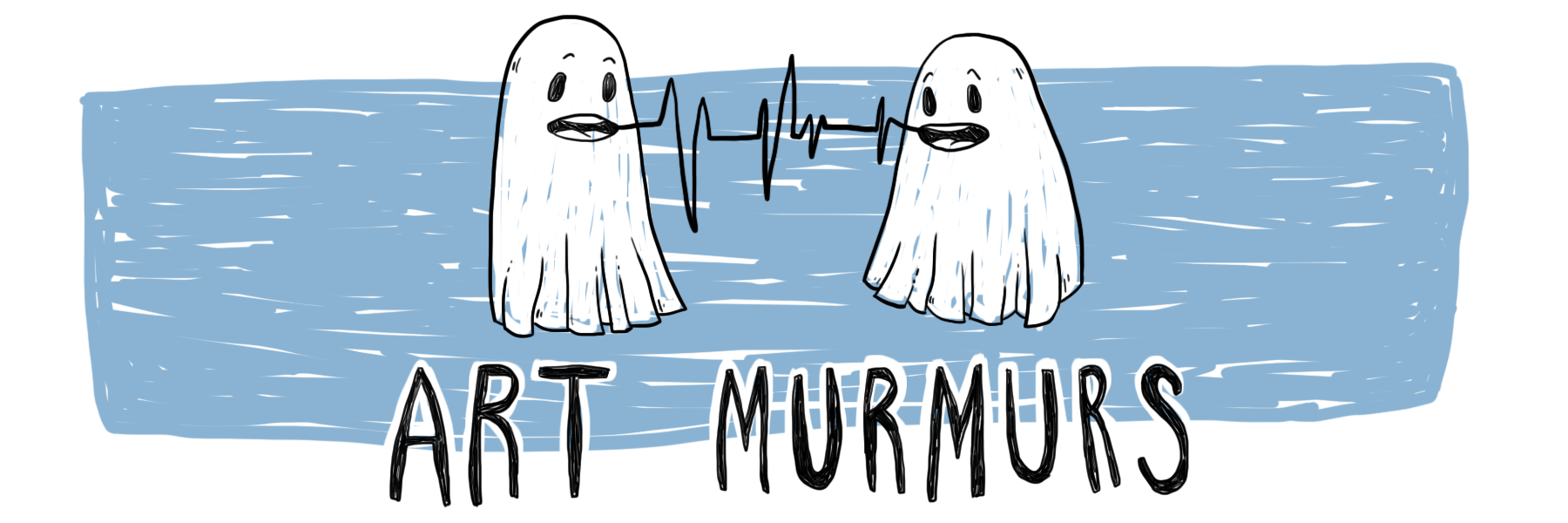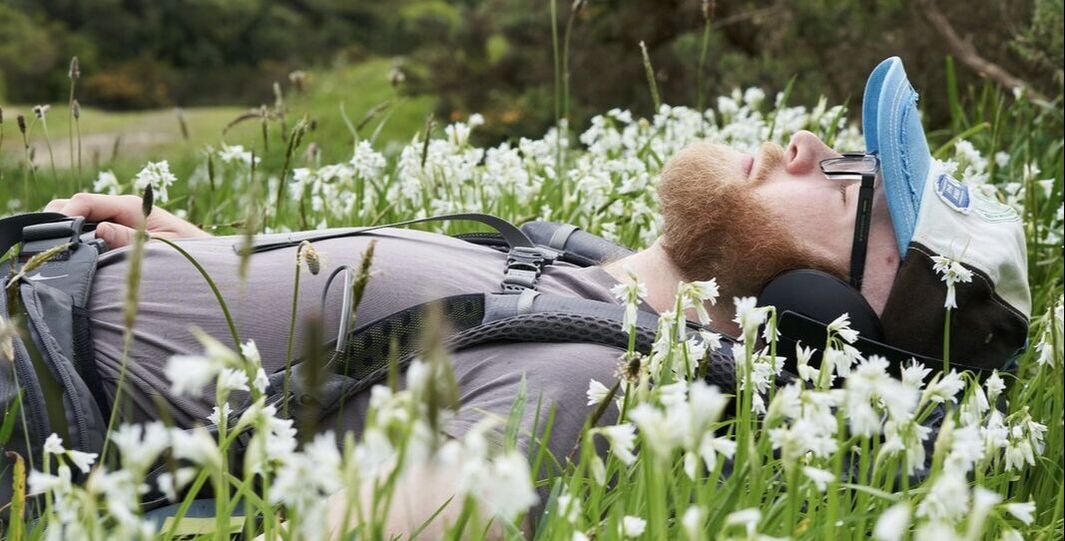Jenny Nimon
One of the strengths of this show is how all the elements blend together (seamlessly is the answer). When I enter the space, I’m already blown away by the pairing of the set and the projected animation, and I end up filling an entire page in my notebook before the show even starts. The set (designed by Finlay Langelaan) includes a faux-grass verge, what looks like a bed covered in more of that faux grass (McGee is lounging on this), a bright yellow centre line on the floor that transforms the stage into a roadside and two sheets strung up onto branches. The sheets are there for the incredible projection (designed by Jacob Banks), which is a pixelated 8-bit-game-style animation of a roadside slowly passing. (The projection design takes us to lots of other cool places during the show, which I won’t spoil, but I will say that Banks steals my heart with this design.) But it’s not until the show begins, and McGee hops up to reveal that what I thought was a bed is actually a treadmill, that it all comes together. The treadmill moves in perfect time with the animation, and it is really like we are walking the journey along with McGee. He also goes on to introduce the two very talented musicians, Ben Kelly (keys) and Phoebe Caldeiro (voice and various instruments) as his ‘left and right headphones’. The whole thing is cinematic.
Articulating what I love about this show is a challenge, because I don’t want to spoil it for those who have managed to secure tickets. A large part of the ride is in how the team manages to surprise the audience over and over again with their creative choices, and I don’t want to be the one to ruin that. In the programme, the team shares that the show has been two years in the making and was nearly in last year’s Fringe, but they had to cancel due to COVID-19. ‘Thankfully,’ they say, ‘that gave us the opportunity to make the show a whole lot better, and what you’ll see tonight has next to nothing in common with that show.’ I think that the extra year has really paid off in the show’s development, because there’s nothing in it that shouldn’t be there. The script is wonderful. It’s very funny (which I wasn’t really expecting), it has a beautiful narrative structure and it’s also quite meta. McGee bases the show around the Hero’s Journey, even going so far as to poke some fun at Dan Harmon’s ‘story circle’. This self-referential structure is fun, and makes sense as a way of communicating the experience of an urban writer character going on a life-changing journey like this one. How do our real-life stories hold up against the stories that we make compelling on purpose?
I really do love this show. My only criticism, which probably has more to do with budget constraints than anything else, is that the treadmill is too narrow for McGee’s feet (it looks like it might be kid sized, if kid-sized treadmills even exist (I really don’t know; I don’t exercise)). This wouldn’t necessarily matter, but McGee does struggle to fit on it and falls off a number of times, which pulls the audience out of the story. My one recommendation to Squash Co: if you bring this show back – which you should – get a bigger treadmill.
Music Sounds Better Out Here is showing at BATS in the Dome at 6:30pm until Sunday 6 March to a sold-out season. For more information, visit the Fringe website.
